Located in House 3 of the Prora complex is the “NVA Museum”. NVA was the Nationale Volksarmee in the GDR and although that is the main topic of the museum, it is not the only one.
The museum has its own car park, so if you are only planning on going there and no-where else then drive past all of the pay & display car parks until you reach it.
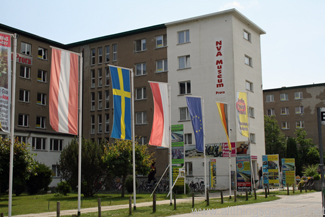
The NVA Museum in Prora
The entrance is just opposite the car park and at this point if you intend of taking photographs you will need to buy a license to do so for €1.
On the ground floor there is an 18m long colour model of the building and a 12 minute film about it. The film includes a scene when, on 2nd October, 1990, the building was handed over to the Bundeswehr.

The NVA museum has its own car park so that visitors do not need to use the pay and display ones
Exhibits on the ground floor include some of the porcelain that would have been used if the complex had seen life as a holiday resort, but also a collection of East German motorcycles.
Other floors contain similar mixes. There are exhibits from the fire brigade in Binz, on the Bundeswehr time in Prora, the history of the sewing machine and typewriter, but also on GDR topics such as the East German telephone system and other technical developments.
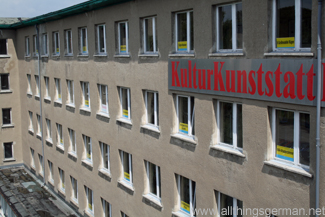
The view along the landward side of the museum
Obviously the NVA still play a major part, with one floor containing examples of how the rooms would have looked during their time there, including offices, dormitories and even the toilets. One cabinet even has a collection of beer glasses with NVA designs on them.
A larger room on the floor contains a “computerised” tank shooting practise range, complete with instructions on how to operated it. Needless to say, it is all fenced off to stop collectors making off with parts of this, and other exhibits that have been donated or aquired over the past 14 years.
The 5th (top) floor houses a cafeteria which offers good views across the Baltic Sea, and there are rooms with (modern!) toys for children to play with.
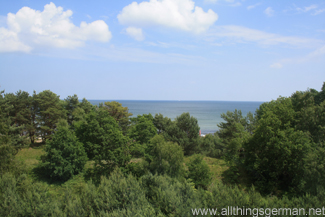
The sea view from the tea room on the 5th floor
All the same, I found the atmosphere after several floors oppressive, seeing so many uniforms, insignia and even forms of protective clothing with military music from the GDR playing in the background.
It may be an impressive collection of items from that era, but was still a lot to take in. In total I spent two hours in the museum, and this is probably the minimum time that you would need to see everything. If you are particularly interesting in one of the items like the motorcycles then plan longer.
The museum’s website does not unfortunately give the opening times, although at the time of writing (May 2014) these are 9am to 7pm in the summer and 10am to 3pm in winter. Entry costs €6.90 for adults, €4.50 for students and €3.90 for children.
A final word on Prora in connection with both museums. I had originally planned to visit both museums in one day, but in the end after the long tour around the documentation centre I decided to go back to the NVA museum the next day instead. Both museums document times in Germany’s recent history when oppressive regimes have been in power, and the scope of both is such that it is an awful lot to take in. If you are short for time, then you can manage both on one day, but if you want to spend time reflecting on what you see then I would recommend splitting your visit as I did.
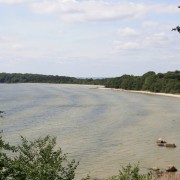
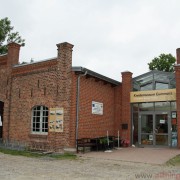

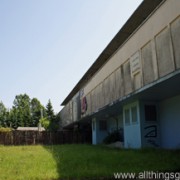

UPDATE: The Kulturkunststatt has apparently now closed, but the NVA Museum has moved round the corner and has a new website: http://nva-museum-ruegen.de